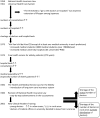A proposed medical system change in Japan inspired by Swedish primary health care: Important role of general practitioners and specialist nurses at primary health care centers
- PMID: 39554297
- PMCID: PMC11565073
- DOI: 10.1002/jgf2.726
A proposed medical system change in Japan inspired by Swedish primary health care: Important role of general practitioners and specialist nurses at primary health care centers
Abstract
Japanese citizens of all socioeconomic statuses have benefited from the national insurance system by receiving high-quality healthcare. However, the Japanese healthcare service is facing a severe financial crisis because of the increasing aging society and social security expenses. Many consultations raise medical expenditure and doctors' work overload, which is about to be regulated, but is questionable how the goal can be achieved without delegating doctors' working tasks. Sweden has a similar health index to that of Japan, but the system is different and is anchored by general practitioners and specialist nurses assigned to primary health care centers. They collaborate to share the workload, responsibilities, and patients' continuous care needs. As a result, the number of consultations is kept small, the length of stay in hospitals is shortened, and doctors' working hours are protected. A system change inspired by Swedish primary health care can be a potential solution for Japanese society.
Keywords: Sweden; general practitioner; medical system change in Japan; primary health care; specialist nurse.
© 2024 The Author(s). Journal of General and Family Medicine published by John Wiley & Sons Australia, Ltd on behalf of Japan Primary Care Association.
Conflict of interest statement
This study has been partly supported by the International Dispatch Program 2019 from the Japan International Cultural Exchange Foundation and Overseas research fellowships from the Uehara Memorial Foundation (No 20200507). The foundations had no role in this study including design data collection and analysis, interpretation of results, the decision to publish, or preparation of the manuscript.
Figures
Similar articles
-
Barriers and facilitators to the implementation of doctor-nurse substitution strategies in primary care: a qualitative evidence synthesis.Cochrane Database Syst Rev. 2019 Apr 15;4(4):CD010412. doi: 10.1002/14651858.CD010412.pub2. Cochrane Database Syst Rev. 2019. PMID: 30982950 Free PMC article.
-
The Experience and Effectiveness of Nurse Practitioners in Orthopaedic Settings: A Comprehensive Systematic Review.JBI Libr Syst Rev. 2012;10(42 Suppl):1-22. doi: 10.11124/jbisrir-2012-249. JBI Libr Syst Rev. 2012. PMID: 27820153
-
How can we help doctors stay in rural areas of Japan? A comparison in medical students' attitudes toward general practice and clinical research of a medical school in Japan and in Sweden.J Rural Med. 2024 Oct;19(4):264-272. doi: 10.2185/jrm.2023-011. Epub 2024 Oct 1. J Rural Med. 2024. PMID: 39355163 Free PMC article.
-
Advanced nurse practitioners in municipal healthcare as a way to meet the growing healthcare needs of the frail elderly: a qualitative interview study with managers, doctors and specialist nurses.BMC Nurs. 2017 Nov 16;16:63. doi: 10.1186/s12912-017-0258-7. eCollection 2017. BMC Nurs. 2017. PMID: 29176932 Free PMC article.
-
Toward the realization of a better aged society: messages from gerontology and geriatrics.Geriatr Gerontol Int. 2012 Jan;12(1):16-22. doi: 10.1111/j.1447-0594.2011.00776.x. Geriatr Gerontol Int. 2012. PMID: 22188494 Review.
Cited by
-
Clinical Pharmacist-Led Collaboration of Multiple Clinical Professions Model Focusing on Continuity of Pharmacotherapy: Japanese Version of the Lund Integrated Medicines Management (LIMM) Model.Pharmacy (Basel). 2024 Dec 5;12(6):184. doi: 10.3390/pharmacy12060184. Pharmacy (Basel). 2024. PMID: 39728849 Free PMC article. Review.
-
Patient-Centered Discharge Criteria and Costs of Total Knee Arthroplasty: A Japanese Study.Cureus. 2025 Apr 19;17(4):e82572. doi: 10.7759/cureus.82572. eCollection 2025 Apr. Cureus. 2025. PMID: 40390715 Free PMC article.
References
-
- World Health Organization . World Health Report 2000. Health systems: improving performance.
-
- International citizens insurance, ranking the best healthcare in the world by country. https://www.internationalinsurance.com/health/systems/ [cited on 6th December, 2023]
-
- Cabinet Office, Japan . Annual report on the aging society in 2022. https://www8.cao.go.jp/kourei/whitepaper/w‐2022/html/zenbun/s1_1_1.html [in Japanese] [cited on 6th December 2023]
-
- The Ministry of Health, Labor and Welfare, Japan . The overview of national medical expenses in 2020. https://www.mhlw.go.jp/toukei/saikin/hw/k‐iryohi/20/dl/data.pdf [in Japanese] [cited on 6th December, 2023]
-
- The Ministry of Health, Labor and Welfare, Japan . Benefits and charge in social security expenses. https://www.mhlw.go.jp/stf/newpage_21509.html [in Japanese] [cited on 6th December, 2023]
LinkOut - more resources
Full Text Sources
Research Materials


